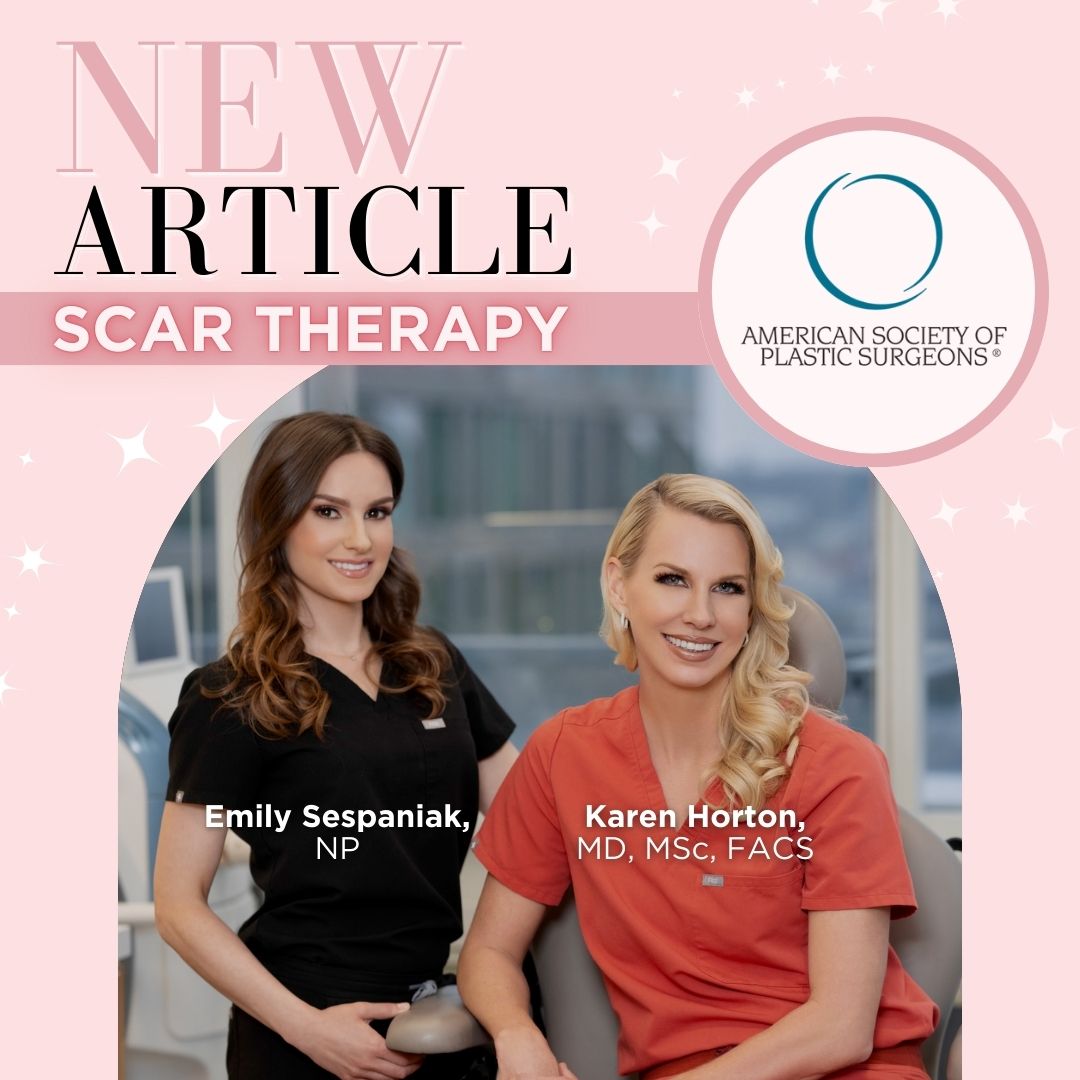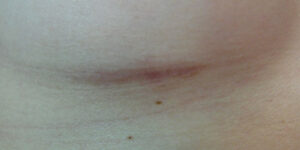Revealing the Secrets to Scar Revision: Dr. Karen Horton Shares Insights

When considering Plastic Surgery, the thought of scarring is a common concern. Stories of prominent or unsightly scars can deter patients from pursuing procedures that might otherwise enhance their lives. However, advancements in scar revision techniques—both surgical and nonsurgical—offer renewed hope for patients looking to improve the appearance of scars from surgeries, accidents, or other causes.
Dr. Karen Horton, MD, MSc, FACS, a board-certified and esteemed ASPS Member Surgeon, alongside Emily Sespaniak, NP, her practice’s expert in non-surgical treatments, sheds light on the intricacies of scar revision treatments and their transformative potential in a recent article for American Society of Plastic Surgeons titled, “An exploration of scar revision surgery applications.” Beyond that, Dr. Horton’s practice is distinguished by its comprehensive scar therapy, which ensures patients achieve the best possible long-term outcomes.
Understanding Scar Revision Options
Scar revision is not a one-size-fits-all solution. Dr. Horton explains that the best approach depends on the scar’s characteristics, the patient’s preferences, and the overall goal. Surgical methods typically involve excising the scar tissue under local anesthesia, often complemented with anti-anxiety medications or laughing gas. General anesthesia may be required for more extensive flap revisions to address missing tissue or alleviate tension on the incision by local tissue rearrangement.
Non-surgical treatments, such as microneedling, have become increasingly popular. This minimally invasive option uses controlled micro-injuries to stimulate collagen production, smoothing scars and improving skin texture. Patients can expect minimal downtime, with redness and swelling subsiding within 24 to 72 hours, according to Sespaniak.
Dr. Horton’s Comprehensive Scar Therapy Protocol
Dr. Horton’s practice doesn’t stop at delivering successful surgical results—it also prioritizes long-term care through a robust scar therapy protocol designed to optimize healing and minimize scar visibility. Beginning approximately six to eight weeks after surgery, this approach empowers patients to participate actively in their recovery.
Scar Therapy at Dr. Horton’s practice integrates three primary components:
- Topical Treatments: Once incisions have fully healed, patients are encouraged to apply medical-grade silicone products like Biocorneum® or Improscar stick. These advanced treatments, available exclusively through the office, contain sun protection and help improve scar texture and color. These topical treatments are applied twice daily for a minimum of six months, forming a cornerstone of the protocol.
- Scar Massage: Patients receive personalized instruction on daily scar massage techniques during their scar therapy appointment. This simple yet effective practice helps promote healing and reduce scar thickness by encouraging proper collagen alignment beneath the skin.
- Laser Treatments (If Needed): For scars that remain dark or discolored six months after surgery, Dr. Horton’s team may recommend IPL or laser treatments. These advanced energy-based solutions are performed in-office, offering an effective way to further enhance scar appearance.
This detailed protocol reflects Dr. Horton’s dedication to helping patients achieve the best possible results, considering surgical precision and post-operative care.

Before Scar Therapy

After Scar Therapy
View More Patient Before and Afters
The Ideal Candidate for Scar Revision
Scar revision is ideal for patients who have undergone surgery and are seeking to refine their results, often returning to the same surgeon for additional improvements. Others, who may have had suboptimal outcomes from previous procedures performed elsewhere, gravitate toward nonsurgical options like lasers and microneedling for a less invasive solution.
Advanced techniques like surgical tissue rearrangement may be necessary to restore both function and aesthetics for more complex cases, such as scars from burns or trauma. Dr. Horton highlights these cases as opportunities for remarkable transformations, especially when addressing scars that impact the growth or symmetry of the breasts.
Keys to Optimizing Outcomes
Achieving the best results requires a combination of professional expertise and patient diligence. While genetics play a significant role in scar formation, the first year post-surgery is critical for optimizing a scar’s appearance.
Additional measures like sun avoidance, maintaining cleanliness, and using silicone-based scar gels help patients protect their scars during healing. Patience is equally crucial, as scars need time to mature before undergoing certain treatments to avoid complications like permanent darkening.
Why Comprehensive Care Matters
Dr. Horton’s patient-centered philosophy ensures that scar therapy is tailored to each individual’s needs and goals. This integrated approach is a testament to her surgical expertise and a reflection of her commitment to providing holistic care.
Through her advanced scar therapy protocol and her dedication to scar revision excellence, Dr. Horton transforms scars from something to be hidden into a testament to healing and the artistry of modern Plastic Surgery. Whether through surgical or nonsurgical methods, her practice empowers patients to achieve results they can take pride in for years to come.
